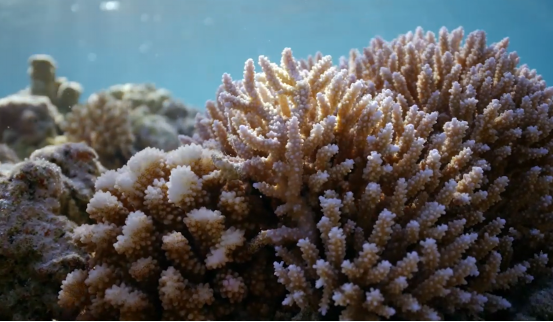
The International Coral Reef Initiative (ICRI) announced on Wednesday that harmful coral bleaching (白化) now affects 84% of ocean reefs worldwide, marking the worst event of its kind in recorded history.
This crisis, caused by rising ocean temperatures since 2023, has become the fourth global bleaching event since 1998. Data from the ICRI — an organization involving over 100 governments and groups — shows it has exceeded the 2014-2017 event that damaged two-thirds of reefs. Experts remain uncertain when this disaster will end.
“The heat stress causing bleaching may never fall below the critical level that starts global events,” warned Mark Eakin, chief scientist at the International Coral Reef Society. He emphasized this crisis is transforming Earth’s ecosystems and threatening the ocean’s ability to support marine life and human survival.
2023 was the hottest year on record, with oceans absorbing most of this excess heat. The average annual sea surface temperature in non-polar regions reached a record 20.87°C (69.57°F) — conditions deadly to coral reefs.
These “rainforests of the sea” — a nickname reflecting their rich biodiversity — host about 25% of marine species. They play vital roles in fisheries, tourism, and coastal protection against storms and erosion.
Corals get their colors from algae living within them, which also provide food. When water stays warm too long, the algae release harmful substances, forcing corals to expel them. This leaves behind pale white skeletons and makes corals far more likely to die.
While active efforts continue to protect and rebuild coral populations, scientists stress the urgent need to cut greenhouse gases like carbon dioxide and methane (a powerful greenhouse gas). “True protection requires tackling climate change at its source — reducing fossil fuel emissions. Other measures are just temporary fixes,” Eakin stated.
Melanie McField, a leader in the Global Coral Reef Monitoring Network, added: “Public awareness is crucial. Doing nothing means signing coral reefs’ death warrant.” Her team monitors reef conditions worldwide.
原创编写 版权所有 侵权必究! 每日更新 个性化阅读 英语飙升!
1.1. What makes the current coral bleaching event the worst in history?
A Its wide-spread influence.
B Its short-term occurrence.
C Its slow-recovery speed.
D Its local-area impact.
解析:选A。A 细节理解题。根据第一段中的“The International Coral Reef Initiative (ICRI) announced ... marking the worst event of its kind in recorded history.”可知,当前珊瑚白化事件成为历史上最严重的是因为它影响了全球84%的海洋珊瑚礁,即其影响范围广。故选A。
2.2. What does “it” in paragraph 2 refer to?
A The 2014-2017 event.
B The fourth global bleaching event.
C The data from ICRI.
D The organization ICRI.
解析:选B。B 词意指代题。第二段提到“This crisis... shows it has exceeded the 2014-2017 event”,结合语境可知,这里的“it”指代的是前面提到的“the fourth global bleaching event”(第四次全球珊瑚白化事件)。故选B。
3.3. What can we infer from Mark Eakin’s words?
A The heat stress will soon decrease.
B The crisis has little impact on humans.
C Temporary fixes can solve the problem.
D Climate change is a serious threat.
解析:选D。D 推理判断题。根据Mark Eakin所说的“The heat stress causing bleaching may never fall below the critical level that starts global events”以及“True protection requires tackling climate change at its source”可知,真正的保护需要从源头上解决气候变化问题。由此可推断出,气候变化是一个严重的威胁。故选D。
4.4. What is the best title for the text?
A The Beauty of Coral Reefs.
B The Monitoring of Coral Reefs.
C The Crisis of Coral Bleaching.
D The Protection of Marine Life.
解析:选C。C 主旨大意题。文章主要围绕珊瑚白化危机展开,讲述了其现状、原因、影响以及应对措施等。故选C。
